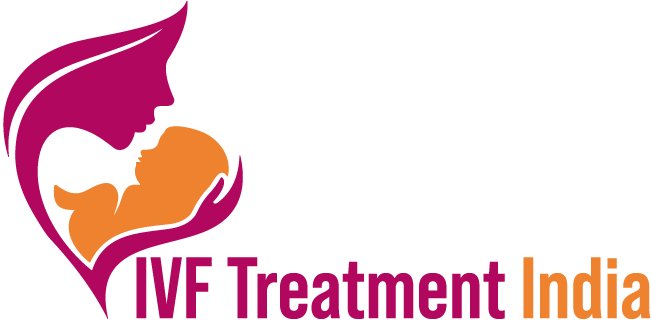Frozen Embryo Replacement Cycle (F.E.R.C.)
A Frozen embryo replacement cycle is a procedure done with assisted reproductive technology (ART), when the previously frozen embryos are transferred and thawed into a woman’s uterus. Frozen embryo replacement is advised usually in the hormone medicated cycle and not in the natural cycle. Transfer of embryos takes place when the lining of the uterus is prepared, it is regularly monitored through ultrasounds. FERC has its many advantages that will be discussed later, most effectively it doesn’t need any pre prepared stimulation of ovaries. When the sperm produces more than two or three good quality embryos, IVF cycle procedures save it in the laboratory for later use; it can be easily frozen for many years.
Read More: Cervical mucus Symptoms, & Treatment
What is an embryo? How does it help in curing infertility?
Can embryos help in having a baby? If these questions come to your mind and make you go uneasy, then yes, you are absolutely on the right track.
Let’s answer all these questions.
An embryo is an initial stage of growth in multicellular organisms, precisely indicating the fertilized eggs are at a premature stage before they become a fetus. In human beings, this phase lasts from fertililzation up to the end of the pregnancy week, i.e, the eighth week. When it shifts to the fetal stage. Splitting and distinctness of cells throughout the embryonic stage. Embryos can be very helpful in curing infertility through various techniques like IVF, frozen embryo transfer and others. In IVF, eggs are fertilized and fetched with the sperm in the laboratories and then prepared for the implantation of embryos in the uterus for better results in conceiving pregnancy. This technique helps so many couples who are approaching pregnancy but facing failure. Genetic testing, while preimplantation can be opt for choosing healthy embryos, can also give better results in pregnancy.
What’s the difference between natural and medicated F.E.R.C.?
The most common question that comes to our mind is this, understand it in a better and easier way and their differentiation.
Natural FERC (NFERC):
- No medication is prescribed to vanquish or stimulate ovaries.
- The time of the natural menstrual cycle is matched with the embryo transfer cycle.
- Natural regulation of hormones is considered endometrial preparation.
- Less intrusive and budget friendly
- Acceptable for women with regular menstrual cycles and better ovarian reserves.
Medicated FERC (MFERC)
- Medications are prescribed to inhibit ovulation.
- Hormone replacement therapy (HRT) is given to fix the endometrium.
- The time for embryo transfer is advised according to medical protocol.
- Higher success rates, as it is more manageable over timing of implantation
- Advisable with irregular periods, facing PCOS, poor ovarian reserve or previously failed IVF.
Pros and cons of F.E.R.C
Every coin has two sides; this term is similar in medical treatment, every treatment has its own benefits and risks. Before committing to any IVF related treatment, one should know its benefits and risks.
Pros related to FERC:
- Better success rates, as it is more manageable over timing of implantation.
- Less risk of conceiving twins or triplets.
- Better quality embryos: The process of freezing embryos improves the quality of embryos as compared to fresh cycle embryos.
- Transfer of embryos can be scheduled according to the needs of the couple, complete flexibility of time.
Some emotional benefits:
- A frozen embryo adds the chance of better results which increases the hopes of the couple to fulfil their dreams of parenthood.
- Lower stress, transfer timing is managed.
- Compound emotions.
Practical benefits:
- Cost effective as it saves from repetition of IVF cycles
- Time saving as the transfer can be scheduled according to patients convenience.
- Various options can be preferred like surrogacy and donor embryos.
Cons or risk of F.E.R.C
There are some disadvantages and risks related to the embryo transfer like
- Side effects of hormones like mood swings, bloating, etc.
- Ovarian hyperstimulation syndrome(OHSS).
- Ectopic pregnancy can also be considered a risk.
- Transfer can conclude with bleeding and infection.
- Side effects of the medications.
Some emotions risk:
- Unpredictability and anxiety.
- Emotional bond with the embryo.
- Transfer failure stress
- Emotional impact on relationship
F.E.R.C. treatment in India
Why should I choose India for F.E.R.C. treatment?
India is highly advanced and skilled in terms of medical treatment, considering India for any IVF related treatment can be a good choice. F.E.R.C. treatment in India is available at very reasonable prices as compared to other western countries. Also the better medical facilities, like highly advanced and up-to-date machines, well experienced doctors and well qualified staff. Hospitals in India also follow very well maintained hygiene. Choosing the best hospital can be questioned in India, as it has a vast range of the best fertility clinics and different cities. IVF Treatment cost in India can differ depending on locations, choice of hospitals and class of treatment one patient is opting for.
F.E.R.C. treatment centres in india
Some of the best F.E.R.C. treatment centres in India can assure personalised treatment plans and dedicated coordinators for patients.
Some of the best fertility clinics are listed below:
- World IVF Centre
- Baby Science
- Birla Fertility
- ART Clinics
- SCI IVF Hospital.
- Ferticity Fertility Clinic
Faqs
Which cities are best for F.E.R.C. treatment in India?
Answer. Delhi, Mumbai, Chennai, Bangalore can be considered as the best options in terms of medical.
What is the cost of the F.E.R.C. treatment in India?
Answer. The cost of F.E.R.C. treatment in India is
What is an embryo?
Answer. An embryo is an initial stage of growth in multicellular organisms, precisely indicating the fertilized eggs are at a premature stage.

